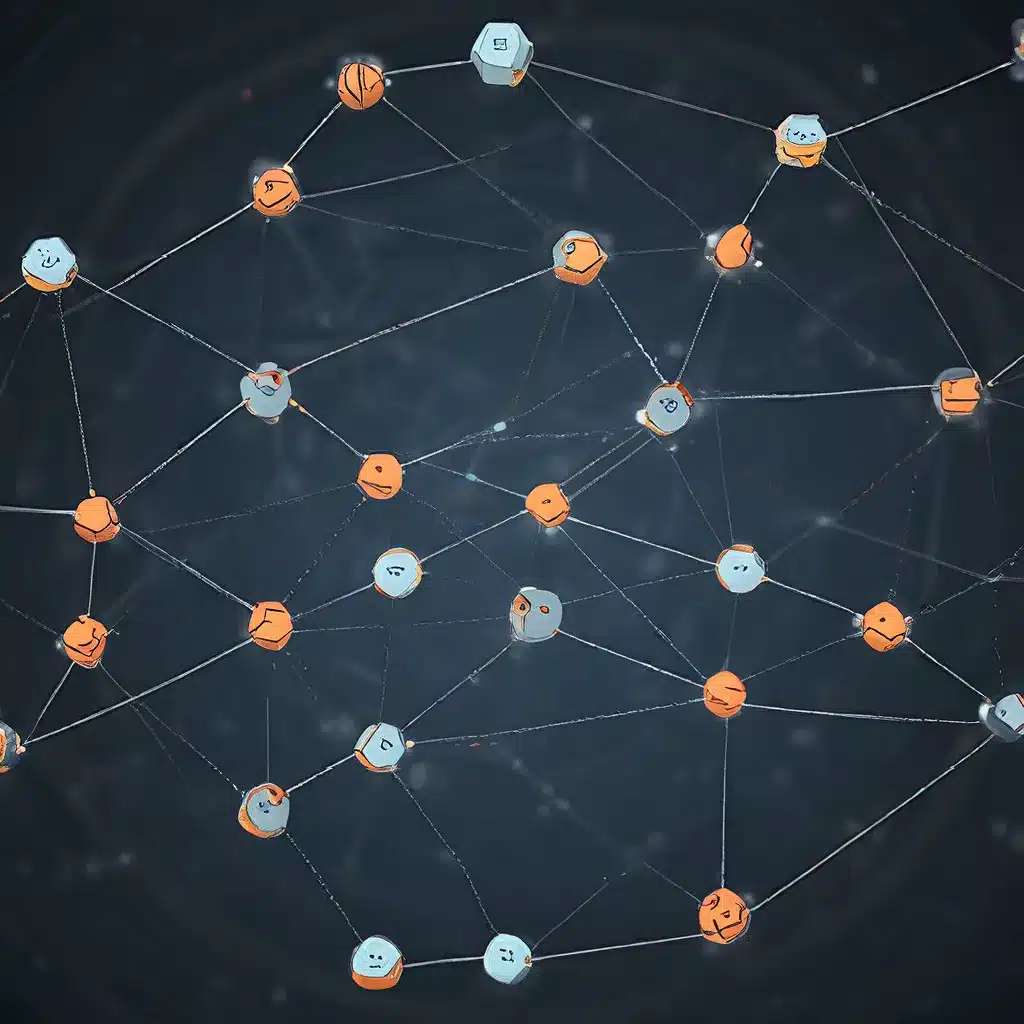
In the rapidly evolving landscape of sensor networks and Internet of Things (IoT) technologies, the ability to effectively coordinate and manage a distributed network of heterogeneous agents is crucial for successful mission execution. As these systems become more complex, with agents possessing diverse capabilities, the need for robust and scalable coordination mechanisms has become increasingly apparent.
Decentralized Task Allocation and the Consensus-Based Bundle Algorithm (CBBA)
One of the key advancements in this field is the Consensus-Based Bundle Algorithm (CBBA), a decentralized market-based protocol that provides provably good approximate solutions for multi-agent, multi-task allocation problems. CBBA’s decentralized architecture, polynomial-time performance, and the ability to handle various design objectives and constraints make it a compelling choice for sensor network coordination.
The CBBA algorithm consists of two main phases: a bundle building phase where each agent greedily generates an ordered bundle of tasks, and a consensus phase where conflicting assignments are identified and resolved through local communication between neighboring agents. This approach allows for efficient task allocation without the need for a centralized decision-making authority, which is particularly important for large-scale sensor networks where the communication and computational overhead of a centralized system can quickly become a bottleneck.
Asynchronous CBBA (ACBBA): Addressing Realistic Communication Challenges
While the original CBBA algorithm provided a robust foundation for decentralized task allocation, it assumed a synchronous communication protocol, which may not always be the case in real-world sensor network deployments. To address this limitation, researchers have developed the Asynchronous Consensus-Based Bundle Algorithm (ACBBA), which extends CBBA to account for more realistic asynchronous communication protocols.
The key innovation in ACBBA is the introduction of a new set of local deconfliction rules that do not require access to the global information state. This approach minimizes the communication load while preserving the convergence properties of the original CBBA algorithm. ACBBA also features consistent handling of out-of-order messages and detection of redundant information, making it better suited for real-time implementation in decentralized sensor network environments.
Coupled-Constraint CBBA (CCBBA): Addressing Complex Mission Characteristics
In addition to the challenges posed by asynchronous communication, sensor network applications often involve complex mission characteristics that require advanced task allocation algorithms. To address this, researchers have developed the Coupled-Constraint CBBA (CCBBA), which extends the original CBBA algorithm to handle coupled constraints.
Coupled constraints refer to assignment relationships, where the value of a task is conditioned on whether or not another task has been assigned, and temporal relationships, where the value of a task is conditioned on when it is performed relative to other tasks. CCBBA introduces the notion of pessimistic or optimistic bidding strategies and relative timing constraints between tasks, enabling it to outperform the baseline CBBA algorithm, particularly in task-rich scenarios.
CBBA with Relays: Addressing Limited Communication in Dynamic Environments
Another key challenge in sensor network coordination is maintaining network connectivity in dynamic environments, where the communication links between agents may be limited or intermittent due to factors such as range constraints or line-of-sight requirements. To address this issue, researchers have developed the CBBA with Relays algorithm, which extends the baseline CBBA algorithm to leverage information available through the existing consensus phases to predict the network topology at select times and create relay tasks to strengthen the connectivity of the network.
By employing underutilized resources, CBBA with Relays improves network connectivity without limiting the scope of the active agents, thus improving mission performance in scenarios where continuous communication is crucial for task execution. This algorithm has been validated through both simulation and experimental flight tests, demonstrating its real-time applicability in heterogeneous multi-agent missions.
Integrating CBBA with Informative Motion Planning
To further enhance the capabilities of sensor network coordination, researchers have combined the CBBA algorithm with a motion planning algorithm called Information-rich Rapidly-exploring Random Trees (IRRT). This stratified planning approach unifies the decentralized informative motion planning and decentralized high-level task allocation algorithms, embedding the goal of information collection at each phase of the planning process.
By integrating CBBA and IRRT, this novel framework maximizes information collection while minimizing resource costs, offering several enhancements to the existing algorithms. The proposed framework has been validated through both simulation and experimental results for networks of mobile sensors performing multi-target localization missions.
Conclusion: The Evolving Landscape of Sensor Network Coordination
The advancements in asynchronous consensus algorithms, coupled-constraint task allocation, dynamic network connectivity, and the integration of informative motion planning have significantly contributed to the progress of sensor network coordination. These innovations address the increasing complexity and real-world challenges faced by modern sensor network and IoT systems, paving the way for more efficient, reliable, and scalable solutions.
As the field continues to evolve, further developments in areas such as machine learning, edge computing, and energy management are likely to play a crucial role in shaping the future of sensor network coordination and IoT applications. By staying at the forefront of these advancements, researchers and practitioners in the field can unlock the full potential of distributed sensor networks and drive the development of cutting-edge IoT technologies.
To explore these topics and stay informed on the latest developments, visit the Sensor Networks website, a leading resource for professionals, researchers, and enthusiasts in the field of sensor networks and Internet of Things.